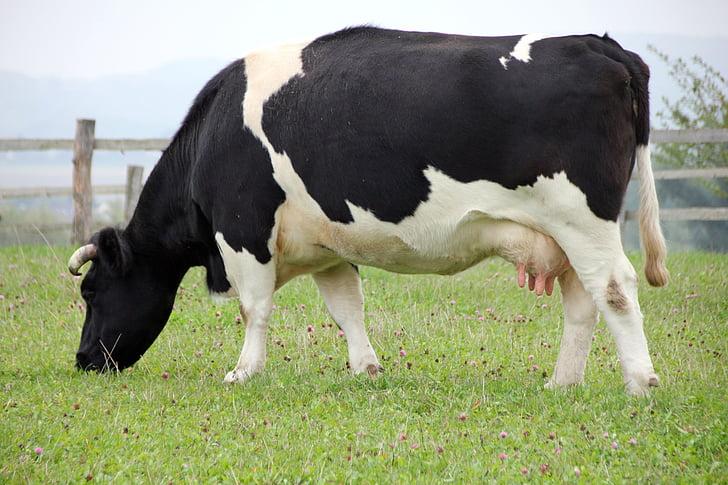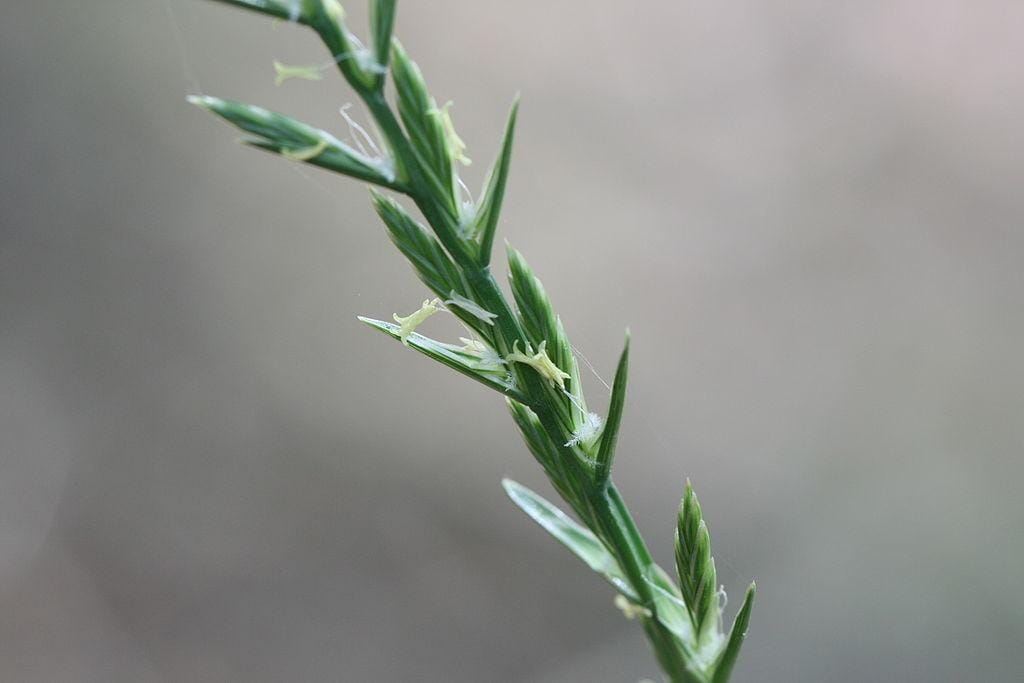The saying goes, ‘we are what we eat’. This is especially true of cows.
The amount of good quality grass they eat determines the quality of quantity of milk they produce. If the pasture is lacking in nutrition, that’s going to reflect on the milk they produce.
This is why your pasture selection and maintenance is one of the most important things you can do for your cows. Dairy cows have to be pampered with well-managed pasture that’s rich in grass and legumes and when grazed will provide them with a powerhouse of energy to make milk that’s high in protein and fat.
In Australia, cows do not graze only in 2% of the farms and are fed cattle ration. And sometimes due to weather conditions, cows are fed silage and hay.
Overall, about 60 – 65% of a cow’s diet comes from freshly grazed grass.

When you’re selecting pasture for your dairy cows, remember to reflect on these important points:
- Yield
- How palatable the grass is
- Ease of propagation
- How rapidly it can be established
- How well it can compete with weeds and pests
- How well it can fight diseases
- Ability to associate with other pasture species
- Ability to adapt to local soils, climates
There is a lot of mixing and matching you can do when you set about to establish an improved pasture. The species you choose depends on your current environment.
Overall, here are some guidelines you can quickly refer to when you’re off to select your pasture species or combinations:
- As always, we’re going to tell you to identify your goal. What’s the whole point of this pasture exercise. Is it to fill a feed gap, or for soil retention on less arable land? Make sure you have the answers ready before you take action!
- The best pasture species or a mix of pasture species – legumes and grasses are always a great combination since the grasses benefit from the nitrogen legumes in the soil
- What is your pasture’s timeframe? Permanent pastures are for more than five years, medium-term pastures are for three-five years, short-term pastures are for two years or less and forage is for just one year.
- Is your pasture going to be dryland or irrigated?
- Are you going to follow rotational grazing or continuous grazing?
- What fertilisers are you planning to use?
- What methods are you going to use to improve the pasture’s performance?
- What is the most appropriate new species for this property?
What is the most appropriate new species for this property?
The environment your farm is present in is everything. The climate, season, availability of rainfall, the type of soil – texture, drainage, pH, salinity, waterlogging) all matter.
The health of your animals should also be considered as some pastures will cause bloat in cattle.
Economics
Pasture improvement isn’t cheap. It’s not just about the finances either, but you’re spending precious time and resources on improving your pastures. If you have decided to go ahead and re-sow your pasture, that’s fine, but before that try out some other options for improving pasture productivity like:
- Changing the target market
- Changing the animal enterprise
- Adjusting dates – dates used for calving, kidding, etc.
- Adjusting animal genetics – stock that grows faster will need quality feed for a shorter period than longer
If you have a dairy farm in southern Australia, then this next nugget of information is especially for you. We’re going to give you some goals, based on research in that area, which you can set for yourself to achieve on your farm:
- Production from perennial ryegrass/white clover swards of 18 – 20 tonnesof dry matter (DM) per hectare per year is possible
- 80% - 90% of the production can be utilised which adds up to 14t – 18t DM/ha/year. However, pasture utilisation from perennial grass or white clover swards of more than 14t DM/ha/year does usually not happen
- Aim for a maximum persistence of 5-10 years or more at this production level
The main sector of dairying in Australia either has high rainfall or is irrigated. So, we can choose the most highly productive species in the grass and legume sector. Let’s explore a few of the most popular species, in brief, mainly - ryegrass, white clover, lucerne and kikiyu. While perennial ryegrass and white clover are considered the cornerstone of dairy pastures, lucerne and kikuyu are also popular farmer choices.
Ryegrass:
Ryegrass is one of the most popular choices for feeding dairy cows, especially in temperate environments. That’s because of its high productivity, palatability, digestibility and nutritive value. However, it does have two main disadvantages – its unbalanced nutrient content that is, crude protein, and secondly, its low dry matter intake by high producing cows.

Lucerne:
Lucerne provides a power-packed supply of nutrients mainly, energy, protein, fibre and minerals to your dairy cows that are both affordable, and can be easily digested too. It is a high yielding legume with nice, deep roots that naturally fix the nitrogen levels in the soil. It’s quite affordable, and can last for about 4-5 years provided it’s managed well. It has been known to help increase milk supply and improve reproduction in high-yielding dairy cows. Lucerne is most popular for its protein content. It comprises highly digestible protein as well as a higher proportion of ruminal undegradable RUP/bypass protein of 25% to 35% RUP than grass hays.
Kikuyu
Cows can produce up to 14 litres of milk per day grazing kikiyu compared to the 20-22 litres of milk per day from grazing ryegrass - these are of course an average daily amount on the type of pasture alone. And this is if the kikiyu is properly managed and dairy cows feeding off kikuyu are also supplemented with minerals. It has been naturalized along most of the east coast of Australia and is now the most dominant summer pasture on coastal dairy farms. Since kikuyu grass is a suitable feed for dry cows. It contains less calcium than ryegrass and so it’s the preferable choice for dry cows up to late pregnancy.
Parting thoughts:
The very best results come from matching the species and the cultivar to the farm system, climate, soil and pests. Considering animal performance and persistency are also important to bring in that beautiful relationship between your cows and your pasture.
So now that we’ve discussed in detail what factors you need to consider before selecting your pasture, and also some of the more popular species, we’re sure you’re familiar with everything you have to do to keep your pastures as productive as possible.
Spring is the key time where you have to capitalise on your pastures, as your growth and leaf appearance starts to increase.
You also need to keep your pasture rotations shorter to maintain adequate levels of grazing pressure and ensure that a continuous supply of high-quality pasture is available for your cows.
Ultimately, the final goal is to manage your pastures to balance maximum pasture growth against maximum animal production. But as you know your pasture growth growth depends on factors like grazing patterns, the changing weather, your soil fertility and soil moisture levels.
If you know the importance of measuring your pastures, but you’re struggling to measure your pastures regularly – you might like what we’re building at pasture.io. For AUD 8 per hectare per year, you get automatic pasture measurements twice a week, right on your phone and computer. No more RPM walks or ATV drives when it comes to measuring your pastures.
Because we triangulate the automatic measurements with your local weather data and the unique needs of your farm – you get accurate grazing predictions. So you can take out the guesswork of where to graze next.
Check out our free and paid plants.
Our customers get a 40X return on their investment with us. So this might change your life too.
- The Dedicated Team of Pasture.io, 2020-11-30